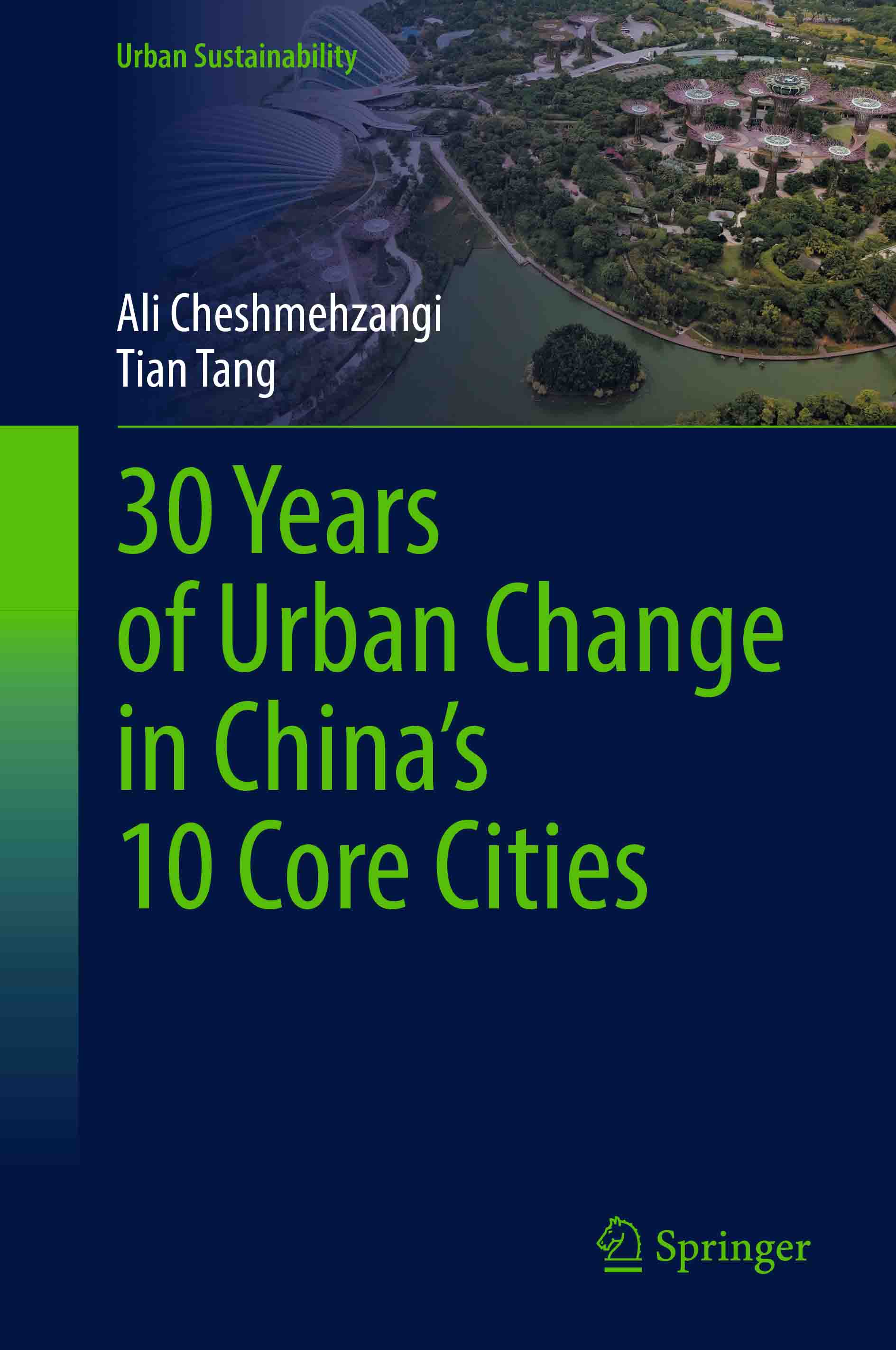Professor Ali Cheshmehzangi and independent researcher Tian Tang have co-authored a new book that investigates the major urban changes in China over the past 30 years and their impact on the country’s sustainable development agenda.
A follow-on from their award-winning 2022 book titled China’s City Cluster Development in the Race to Carbon Neutrality, which highlighted regional development issues, this 2024 volume explicitly explores China’s ten core cities, presenting a mapping study of their changes over three decades of rapid urbanisation. Both books are published by Springer as part of its Urban Sustainability series.
30 Years of Urban Change in China’s 10 Core Cities highlights each city’s development trends, sustainable development plans, and major strategies, and summarises lessons learnt from the case study examples with the intention of guiding other developing and rapidly urbanising nations.
Professor Ali Cheshmehzangi, Head of the School of Architecture, Design and Planning at UQ and Editor-in-Chief of Springer’s Urban Sustainability series, said China’s urban landscape has undergone a remarkable transformation over the past three decades, boosted by unprecedented economic growth, rapid urbanisation, and ambitious government policies.
He said the country’s urbanisation story is not just about the physical transformation of cities but also about the intricate interplay of socio-economic dynamics and environmental considerations.
“Cities in China have played a significant role in sustainable development outcomes, with both positive and negative influences,” Professor Cheshmehzangi said.
“The impact of urban change in these cities is essential to explore, particularly the impacts of fast architecture and rapid urbanisation on living environments. This is important to study from the perspective of urban dynamics and creating sustainable development pathways for the future.”
Research for the book found that while China’s rapid urbanisation has seen cities with cutting-edge infrastructure and thriving economies, it has not come without challenges. The state of the environment has deteriorated significantly, the capacity for efficient planning has been frequently outpaced by the quick speed of development, and socioeconomic gaps have grown wider, making social cohesion and equity pressing concerns.
Looking ahead, creating resilient, inclusive, and dynamic urban environments will require a strong focus on sustainability, smart technologies, human-centric development, and heritage preservation.
The authors say the Chinese government’s commitment to urban development remains steadfast, with ambitious plans outlined in initiatives such as the Belt and Road Initiative (to connect Asia, Africa, and Europe through infrastructure development) and the Xiong’an New Area project (to build a new city to relieve Beijing of non-essential functions and drive economic growth).
With China’s urbanisation expected to continue unabated, albeit at a more moderate pace, the country is entering a new phase of urbanisation where the focus is shifting towards addressing issues of sustainability, inclusivity, and resilience, to build cities that are not only prosperous but also liveable for all residents.
With this in mind, the book aims to provide a greater understanding of the micro-history of China’s recent development, particularly aligned with sustainable development plans of its major regions, core cities and urban hubs. It is a valuable resource for local governments, authorities, urban planners, urbanists, practitioners, developers and urban researchers.
The ten cities studied are:
1. Beijing Municipality, The Capital of China
2. Shanghai Municipality
3. Shenzhen City, Guangdong Province
4. Guangzhou, Guangdong Province
5. Hangzhou, Zhejiang Province
6. Chengdu, Sichuan Province
7. Nanjing, Jiangsu Province
8. Wuhan, Hubei Province
9. Tianjin Municipality
10. Suzhou, Jiangsu Province
Visit the Springer website to access the book or for more information.




